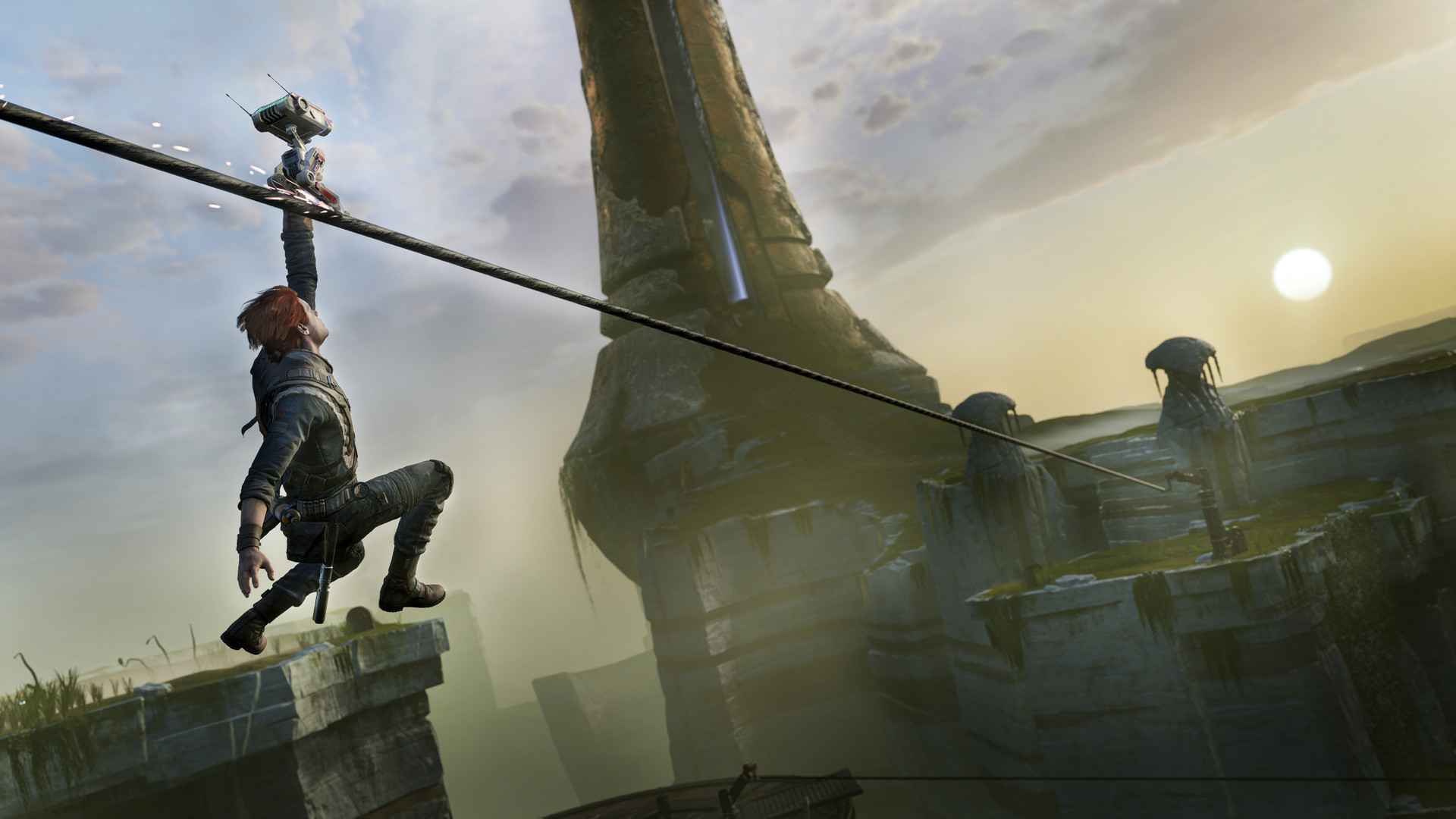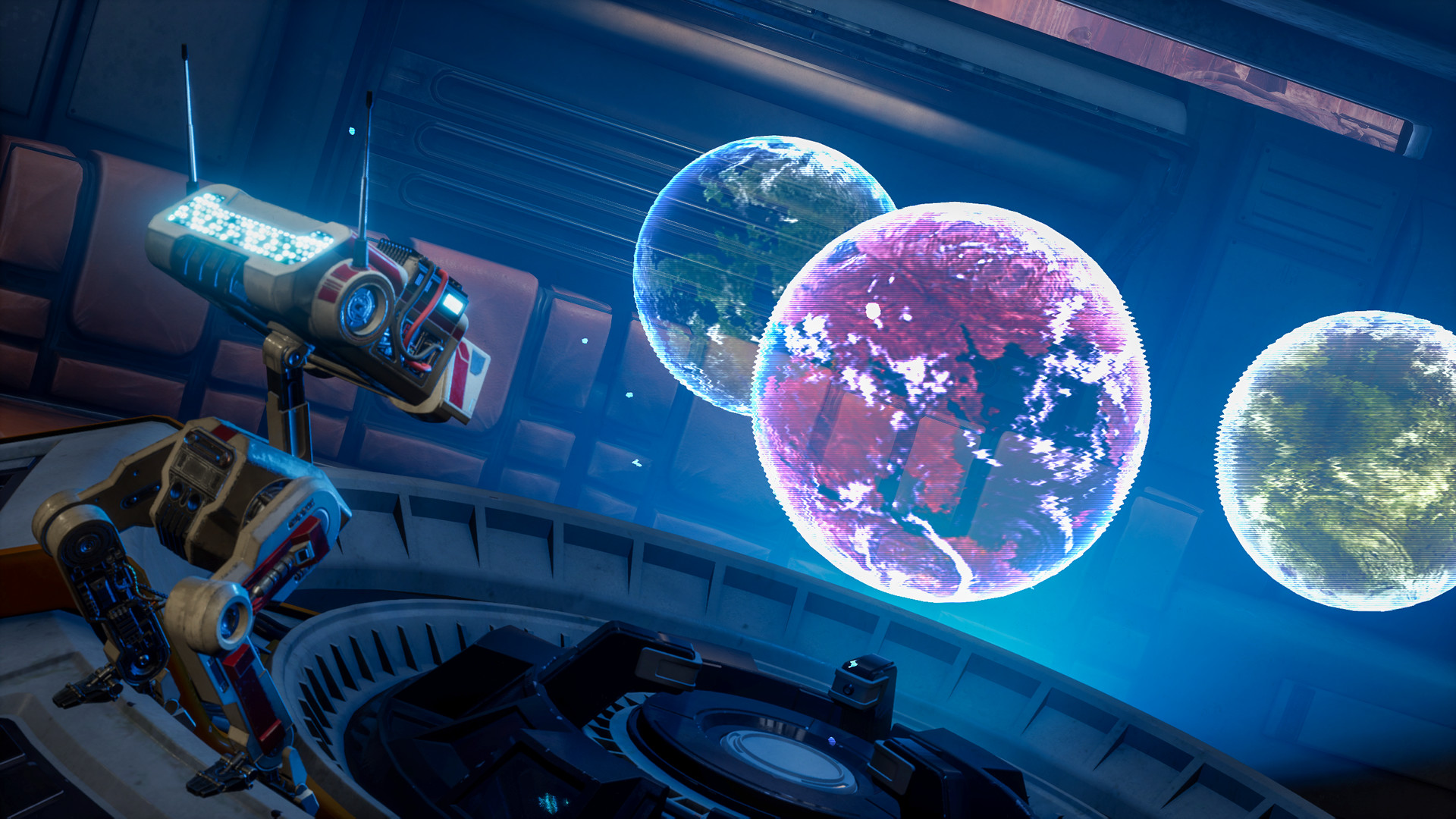I really like Fallen Order. So much that at one point, I was convinced I’d be 100%’ing it, but I’ve had to accept that likely won’t happen. I’m going to be bummed when it’s all over, but it’s also a game fighting me in strange and frustrating ways, a game that’s encouraging me to explore every nook and cranny of its world, but in the same breath, fighting that impulse.
Fallen Order is a game with a lot of influences, though primarily Dark Souls and Metroid. And the moment you invoke those influences, you start setting expectations, and people start making assumptions. In this case, it’s about the Metroid part, where players spend the game unlocking new tools (force powers), allowing them to access new spots in old areas. Fallen Order is so transparent about this that when you can’t access a certain area, it’s literally marked as “blocked” on the map and flips to a different color when it’s accessible. You are expected to come back and start finding all this stuff—it’s core to the game’s DNA. But there are other big markers, too.

In most games, you move straight from point A to point B. When you put a percentage counter in a game, you immediately have my attention. It’s a signal, a declaration—a game saying “I want to be explored, and I’m going to reward your attention to detail.” Fallen Order is one of those. When you load the map, a few things are listed: the number of chests in the area, how many secret upgrades are hiding, and a percentage marker that slowly goes up as you see every room, open every chest, find every upgrade. It’s goofy, but watching that number go up is profoundly satisfying, and turns exploration into a meta puzzle. Now, it’s about trying to find the last area you haven’t discovered, even if it contains nothing at all!
But Fallen Order’s level design is strange and labyrinthian. It’s meant to be confusing, and hard to parse. You’re supposed to get lost. This is true even in areas with traditional building structures. Wherever you go, Fallen Order will twist and turn in ways that make it difficult to remember where you came from and where you’re coming. The in-game map is of little help, a perplexing rendering of the world that provides precious little context for what you’re looking at. It’s neat that you can move the map around like a 3D object, but the map doesn’t even fully connect from one area to the other, rendering it useless as areas get much larger.
Along the way, you find meditation points, aka checkpoints, where you can unlock new skills and refill your health items. These spots are all over Fallen Order—you’re probably finding a new one every 15 or 20 minutes. What you can’t do in Fallen Order, however, is fast travel between meditation points. On some level, I get it; a level design trick Fallen Order relies on over and over again is having you go through an area with lots of paths you can’t go down without a new power, obtaining that new power, and then coming all the way back, now with the ability to head down those paths. But even after you’ve exhausted all the story beats on a planet, even when the game’s plot has come to a conclusion, you still need to walk through the entire level to reach old areas. I often didn’t know how to properly navigate Fallen Order’s worlds when I was in the thick of them, let alone having to come back 10 hours later.
All I want to do is track down the handful of chests I’m missing, but as designed, getting there would take more effort than it’s worth. Granted, that’s partly because Fallen Order isn’t hiding anything useful in its chests beyond aesthetics, but quite often, the journey to finding those chests is still worth it. A clever puzzle here, a tough platforming section there. That’s what I’m here for, but in Fallen Order, there’s a chance it’s going to take me upwards of 30 minutes merely trying to get back to the area I need to explore further. That’s not worth it.

This is a weirdly common problem in games like this, too.
One of my favorite Metroid-style games in recent memory is Ori and the Blind Forest. Beautiful to look at and beautiful to play, it also drove me up a wall. Some ways through the game, you’re forced to escape an area and it gets inexplicably locked off from the player. Not temporarily— permanently. You can’t go back. Problem: you cannot 100% the game without fully exploring this area, a game that tracks completion. This is a huge no-no in games like this, and left me with a sour taste in my mouth, even though I utterly adored everything else.
The developers did, however, later address the issue. In the game’s “Definitive Edition,” released a year after the game’s original launch, they allowed players to return to that area. (Unfortunately, you’re still screwed if you, like me, have a save game from the original sitting at 97%.) Interestingly, they also addressed a complaint similar to Fallen Order, by allowing players to jump between checkpoints. Upon realizing all of this while researching this piece, I immediately started downloading Ori and the Blind Forest: Definitive Edition on my Switch.
I can only hope Respawn will think about making similar changes in the future. All I want to do is play everything this game, a game I’m having a great time with, has to offer. I realize such changes don’t happen overnight, but hey, I’d be happy to have a reason to come back.
Follow Patrick on Twitter. His email is patrick.klepek@vice.com, and available privately on Signal (224-707-1561).
from VICE https://ift.tt/2rsh6xL
via cheap web hosting
No comments:
Post a Comment